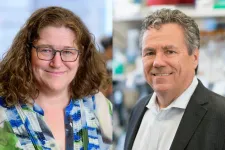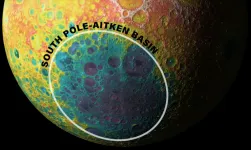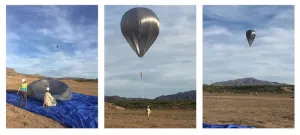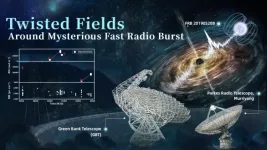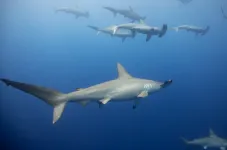(Press-News.org) Discussions of cancer often stress the genetic mutations that drive disease by altering the normal function of cellular proteins. KRAS, for example, normally acts as an on/off switch for cellular proliferation, but mutations to the gene — common in lung cancer, colorectal cancer and pancreatic cancer — cause that switch to stay on.
Yet mutations are only half of the story.
Interactions between these genetic mutations and external factors, such as tissue injury that leads to inflammation, reshape both cells’ identities and their local environment in ways that foster cancer’s emergence and runaway growth.
In pancreatic cancer, these changes start to happen fast — within 24 to 48 hours after tissue damage. They happen predictably. And they greatly expand some cells’ ability to communicate and interact with nearby cells.
Those were the findings from a new study published May 11 in Science by an international research team led by investigators at Sloan Kettering Institute at Memorial Sloan Kettering Cancer Center (MSK) and IRB Barcelona. The research combined sophisticated genetically engineered mouse models and advanced computational methods to map the earliest cell states leading to pancreatic ductal adenocarcinoma (PDAC), the most common type of pancreatic cancer.
While the five-year survival rate for pancreatic cancer has been inching upward in recent years, it remains quite low — just 12%, according to the Pancreatic Cancer Action Network. The disease is usually not caught until the cancer is in advanced stages and, thanks in part to advances in treating other types of cancer, pancreatic cancer is the third-leading cause of cancer-related death.
The research aimed not only to shed light on the difficult-to-study early cellular events that give rise to pancreatic cancer, but also to find potential opportunities for medical intervention at earlier stages of the disease.
How Plasticity Drives Cancer
The ability for cells to shed their original identity and adapt is called plasticity. And this plasticity is enhanced by inflammation, the researchers found.
“These precancerous cells gain the ability to send and receive far more signals than a normal cell,” says computational biologist Dana Pe’er, PhD, one of the paper’s two senior authors. “And we saw that this isn’t random — it’s structured. You see the same patterns emerge over and over when you run the experiments in different mice.”
The study was led by co-first authors Cassandra Burdziak, a doctoral student in the Pe’er Lab, and Direna Alonso-Curbelo, PhD., a former member of the lab of co-senior author Scott Lowe, PhD, who now leads her own lab at IRB Barcelona.
In order to study the origins and impacts of plasticity on cells expressing a mutated version of KRAS, the scientists performed single-cell analyses on normal, inflamed, premalignant and malignant tissues using a genetically engineered mouse model designed to accurately recreate many aspects of pancreatic cancer in humans — from its earliest beginnings to metastasis.
“These models allowed us to capture the earliest changes in pancreatic epithelial cells as they progressed from a healthy state toward a malignant state,” says Dr. Lowe, a Howard Hughes Medical Institute Investigator and Chair of the Cancer Biology and Genetics Program at the Sloan Kettering Institute. The single-cell analyses allowed researchers to tease apart the characteristics of sub-populations of individual cells within the pancreas at each stage of progression and how their interactions further drive the progression.
“This project required a significant amount of computational innovation, most of it led by Cassandra,” notes Pe’er, who is also a Howard Hughes Medical Institute Investigator and who heads the Computational and Systems Biology Program at the Sloan Kettering Institute. “We had to invent a number of new methods to answer questions that aren’t typically asked about plasticity, cell-to-cell communication, and tumor progression.”
For example, the team invented a new classification score to measure the plasticity of a cell.
The team also found increased plasticity led to the enhancement of genes related to cell-to-cell communication: like those that encode ligands and receptors.
“Basically, these are genes that enable cells to send and receive signals from its environment and with other cells,” Pe’er says. “This gives the cell the ability to respond to signals that a normal cell wouldn’t be able to. They also have an enhanced ability to communicate with immune cells, and, as a result, the immune system around these cells starts to change.”
Additionally, the researchers were able to determine that a few sub-populations of cells, some of them quite rare, transform into major hubs of communication, driving a feedback loop that leads to the development and progression of pancreatic cancer.
The study represents the culmination of research initiated by Dr. Alonso-Curbelo, who has a long-standing interest in detailing the molecular mechanism by which inflammation promotes cancer initiation.
“This work was a true partnership between experimental science and computational science,” Dr. Alonso-Curbelo says.
Computational models were validated with follow-up experiments. “For example, imaging showed us that the populations of cells that computational methods said were talking to each other were significantly closer to each other in the tissue,” Burdziak says.
Through further experiments, the team was able to demonstrate that these conversations drive cancer development.
“We developed new mouse models to specifically block cell-to-cell signaling associated with neoplastic plasticity,” Dr. Alonso-Curbelo says. “These analyses showed that these expansive communication networks direct pancreatic tumor formation in the mice.“
Toward Clinical Applications
As a whole, the research provides a new, detailed understanding of how cells carrying a mutated copy of the KRAS gene gain plasticity and drive the progression of cancer when subjected to inflammation.
“This provides a roadmap that can help develop strategies to detect or possibly even prevent pancreatic tumors before they reach an incurable stage,” Dr. Lowe says. “And understanding how cell-to-cell communication networks drive the initiation of pancreatic cancer holds promise for the development of therapeutics to block or slow early cancer progression, and even potentially more advanced disease.”
Additional Authors, Funding, and Disclosures
Additional authors include: Francisco M. Barriga, Ronan Chaligné, Ojasvi Chaudhary, Hsuan-An Chen, Zi-Ning Choo, Yu-Jui Ho, Richard Koche, Wei Luan, Ignas Masilionis Tal Nawy, José Reyes, and Alexandra Wuest of MSK. Thomas Walle of MSK, the German Cancer Research Center, Heidelberg University Hospital, and the German Cancer Consortium. Doron Haviv, Vianne Gao, Yubin Xie, of MSK and the Tri-Institutional Training Program in Computational Biology and Medicine. Zhen Zhao of MSK and the Icahn School of Medicine. Chujun Julia Zhao of MSK and Columbia University. Linas Mazutis of MSK, Columbia University and Vilnius University. Daniela F. Quail and Yuhong Wei of McGill University.
This work was supported by Alan and Sandra Gerry Metastasis and Tumor Ecosystems Center at MSK, the National Cancer Institute (P30 CA008748, F31CA24690, U54 CA209975), a La Caixa Junior Leader Fellowship (LCF/BQ/PI20/11760006), a FERO-ASEICA grant, the Spanish Cancer Research Association and Spanish Ministry of Science and Innovation (PID2021-128102OA-I00), an Edward P. Evans Young Investigator Award, a fellowship from the DKFZ Clinician Scientist Program, supported by the Dieter Morszeck Foundation, the Fraser Memorial Trust, a McGill MI4 Platform grant, Howard Hughes Medical Institute Fellowship of the Damon Runyon Cancer Research Foundation (DRG-2382-19), the National Institutes of Health (R25 CA233208), the Howard Hughes Medical Institute, Geoffrey Beene, the National Institute of Child Health and Human Development (HD084071), and the Starr Cancer Consortium.
MSK Disclosures: Dr. Lowe is a consultant and holds equity in Blueprint Medicines, ORIC Pharmaceuticals, Mirimus Inc., PMV Pharmaceuticals, Faeth Therapeutics, and Constellation Pharmaceuticals. Drs. Alonso-Curbelo and Lowe are listed as the inventors for a patent application covering methods for preventing or treating KRAS mutant pancreas cancer with inhibitors of type 2 cytokine signaling. Dr. Pe’er is on the scientific advisory board of Insitro. Dr. Walle T.W. reports stock ownership for Roche, Bayer, Innate Pharma, Illumina, and 10x Genomics, as well as research funding (not related to this study) from CanVirex AG, Basel Switzerland, and Institut für Klinische Krebsforschung GmbH, Frankfurt, Germany. Cassandra Burdziak, along with Drs. Alonso-Curbelo, Lowe and Pe’er are listed as inventors on a provisional patent application related to methods and compositions for treating PDAC, for which Memorial Sloan Kettering Cancer Center is the applicant.
END
Expansion of cell-to-cell communication drives the early development of pancreatic cancer, new research in mice finds
2023-05-11
ELSE PRESS RELEASES FROM THIS DATE:
When stem cells can’t roll on a bumpy road, muscles break down
2023-05-11
Key takeaways
Stem cells travel along a collagen network to reach damaged muscle tissue and heal it.
In Duchenne muscular dystrophy, stiff, scarred collagen prevents stem cells from reaching their target.
A protein called sarcospan lessens this scarring and allows stem cells to do their job more successfully, pointing toward potential new treatments for the disorder.
Muscles that ache after a hard workout usually don’t hurt for long, thanks to stem cells that rush to the injured site along “collagen highways” within the muscle and repair the damaged tissue. ...
SwRI to lead NASA/SSERVI Center for Lunar Origin and Evolution
2023-05-11
SAN ANTONIO — May 11, 2023 —Southwest Research Institute has entered into a five-year, $7.5-million cooperative agreement with NASA to lead the Center for Lunar Origin and Evolution (CLOE), which will conduct basic research to support science enabled by human exploration of the Moon and the Endurance-A mission concept, a far side lunar rover mission prioritized by the 2022 Planetary Science and Astrobiology Decadal Survey report, “Origins, Worlds, and Life.” CLOE will be part of NASA’s Solar System Exploration Research Virtual Institute (SSERVI).
“The Moon is unmatched in its potential to provide ...
Google Quantum AI braids non-Abelian anyons for the first time
2023-05-11
Our intuition tells us that it should be impossible to see whether two identical objects have been swapped back and forth, and for all particles observed to date, that has been the case. Until now.
Non-Abelian anyons - the only particles that have been predicted to break this rule - have been sought for their fascinating features and their potential to revolutionize quantum computing by making the operations more robust to noise. Microsoft and others have chosen this approach for their quantum computing effort. But after decades of efforts by researchers in the field, observing non-Abelian anyons and their strange behavior has proven challenging, ...
Solar-powered balloons detect mysterious sounds in the stratosphere #ASA184
2023-05-11
CHICAGO, May 11, 2023 – Imagine if sending your science experiment 70,000 ft in the air just took painter’s plastic, tape, a dash of charcoal dust, and plenty of sunlight.
Daniel Bowman of Sandia National Laboratories will present his findings using solar-powered hot air balloons to eavesdrop on stratospheric sounds at the upcoming 184th Meeting of the Acoustical Society of America, running May 8-12 at the Chicago Marriott Downtown Magnificent Mile Hotel. His presentation will take place Thursday, May 11, at 2:50 p.m. Eastern U.S. in the Purdue/Wisconsin ...
Earth system modeling and fossil data reveal Homo adaptation to diverse environments
2023-05-11
Homo species – particularly Homo sapiens – were uniquely equipped to adapt to highly diverse environmental conditions and landscape mosaics, according to a new study, which may have enabled our species and that of our closely related ancestors to survive and thrive in highly fluctuating Pleistocene environments. Homo sapiens are the only surviving hominin species today. However, whether this is because our species was uniquely successful at adapting to Pleistocene environments, because we outcompeted other contemporary Homo species through unique physiological or social adaptations, ...
A better route to benzocyclobutenes, sought-after buildingblocks for drugs
2023-05-11
LA JOLLA, CA— Scripps Research chemists have solved a long-standing problem in the field of pharmaceutical chemistry with a relatively simple and controllable method for making benzocyclobutenes (BCBs)—a class of reactive compounds that are highly valued as building blocks for drug molecules, but have been relatively hard to access.
The new method, described in a paper in Science on May 12, uses designer ligand molecules with palladium-atom catalysts to break pairs of adjacent methylene-type C-H bonds in relatively cheap and abundant carboxylic acids. Breaking these bonds enables the making ...
Researchers discover twisted fields around mysterious fast radio burst
2023-05-11
Fast Radio Bursts (FRBs) are the brightest millisecond-duration cosmic explosions in radio bands. Their unknown origin poses challenges for astronomy as well as physics.
The Commensal Radio Astronomy FAST Survey (CRAFTS), a key program of the Five-hundred-meter Spherical radio Telescope (FAST), discovered the world's first persistently active repeating FRB, known as FRB 20190520B. Now this FRB has provided clues that may help clarify the origin of FRBs.
An international team led by Dr. LI Di from the National Astronomical Observatories of the Chinese Academy of Sciences (NAOC) carried out a monitoring campaign of FRB 20190520B, using the Parkes telescope in Australia and ...
U.S. Fishing Policy is Boosting Fish Populations, Not Constraining Most Fisheries
2023-05-11
Commercial fishing employs 1.2 million Americans and generates more than $165 billion annually. Yet warming waters are threatening fish populations and disrupting fisheries around the world—a challenge set to worsen as climate change advances. Despite the importance of sustaining fisheries, the reauthorization of the cornerstone policy protecting them in the United States—the Magnuson-Stevens Act—has been stalled in Congress for a decade. The holdup? Some blame the policy for being too stringent and leading to what they call “underfishing,” while others ...
Human ancestors preferred mosaic landscapes and high ecosystem diversity
2023-05-11
A new study published in the journal Science by an international team finds that early human species adapted to mosaic landscapes and diverse food resources, which would have increased our ancestor’s resilience to past shifts in climate.
Our genus Homo evolved over the past 3 million years – a period of increasing warm/cold climate fluctuations. How early human species have adapted to the intensification of climate extremes, ice ages, and large-scale shifts in landscapes and vegetation remains elusive. ...
Hammerhead sharks hold their breath on deep water hunts to stay warm
2023-05-11
Scalloped hammerhead sharks hold their breath to keep their bodies warm during deep dives into cold water where they hunt prey such as deep sea squids. This discovery, published today in Science by University of Hawai‘i at Mānoa researchers, provides important new insights into the physiology and ecology of a species that serves as an important link between the deep and shallow water habitats.
“This was a complete surprise!” said Mark Royer, lead author and researcher with the Shark Research Group at the Hawai‘i Institute of Marine Biology (HIMB) in the UH Mānoa School of ...
